January 2021 Newsletter – Housing Market Updates for Silicon Valley


The median single-family home price declined slightly month-over-month, which is normal for the late autumn season. Year-over-year, single-family home prices increased considerably in San Mateo and Santa Cruz, up 10% and 20%, respectively. Inventory has continued to decline, as fewer homes have come to market and sales have remained high, contributing to the price increases.
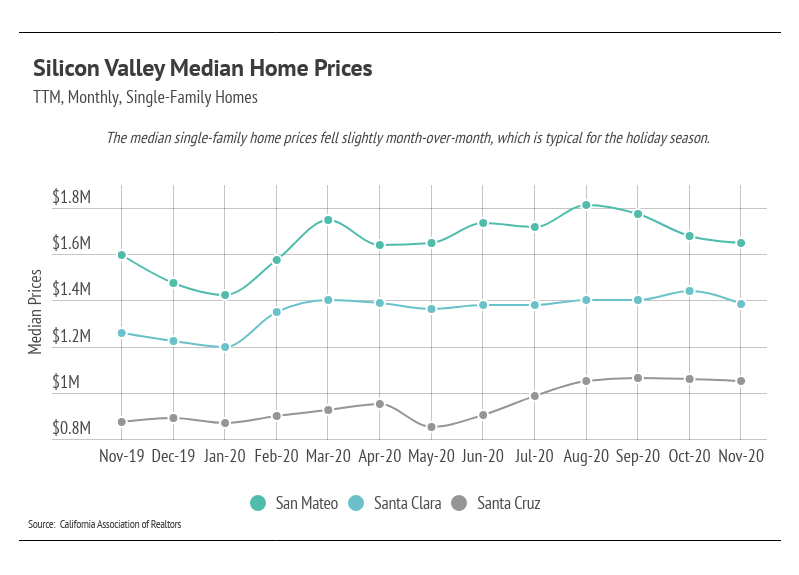
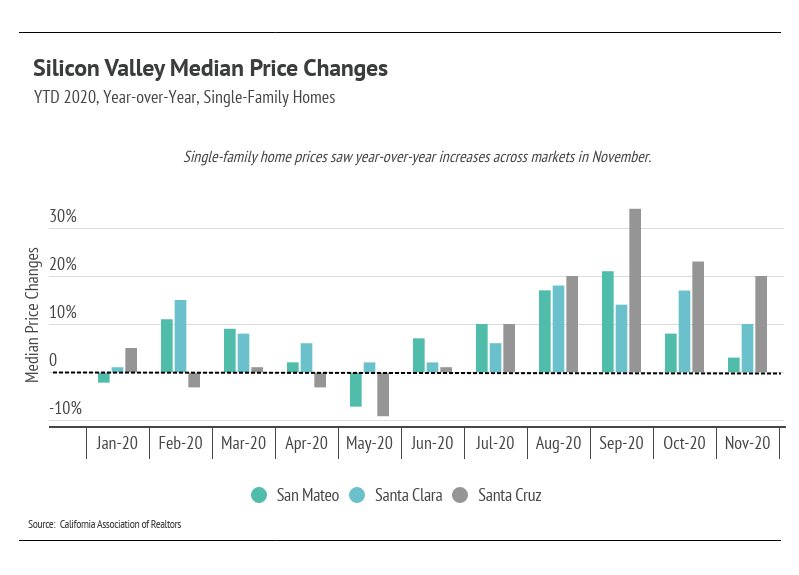
As you can see in the graph below, median condo prices were up across counties. Santa Cruz had an exceptionally large year-over-year median price increase.
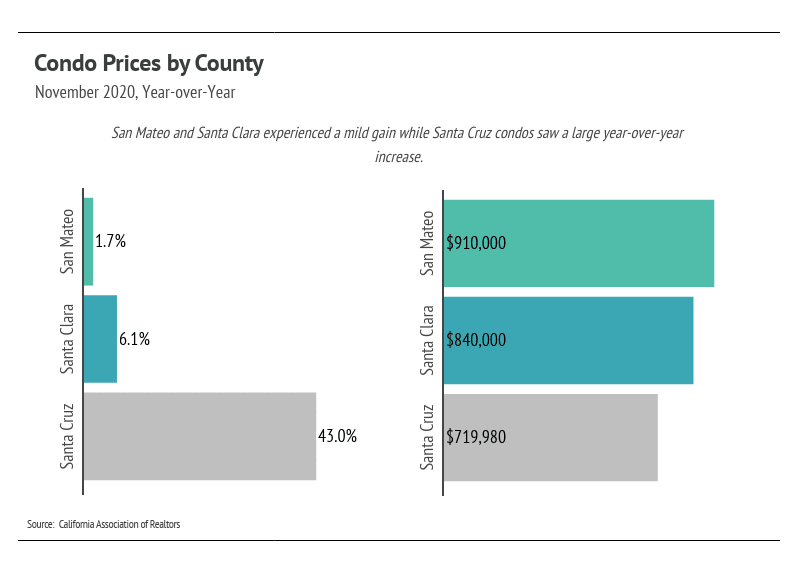
Single-family home inventory was lower through 2020 relative to 2019. Home sales climbed after the initial months of the pandemic (March through May). Generally, buyers and sellers left the market in April and May, causing pent-up demand. Since June, sales have increased and showed unseasonably high levels in November 2020 for both single-family homes and condos. Usually, we expect sales to decline in the autumn and winter months, but homes were selling at extremely high rates. We can attribute this to fewer holiday obligations in 2020, allowing more focus on home buying. Single-family home inventory dropped in November due to unusually high sales numbers, and it is likely to decline further as we make our way through the winter months.
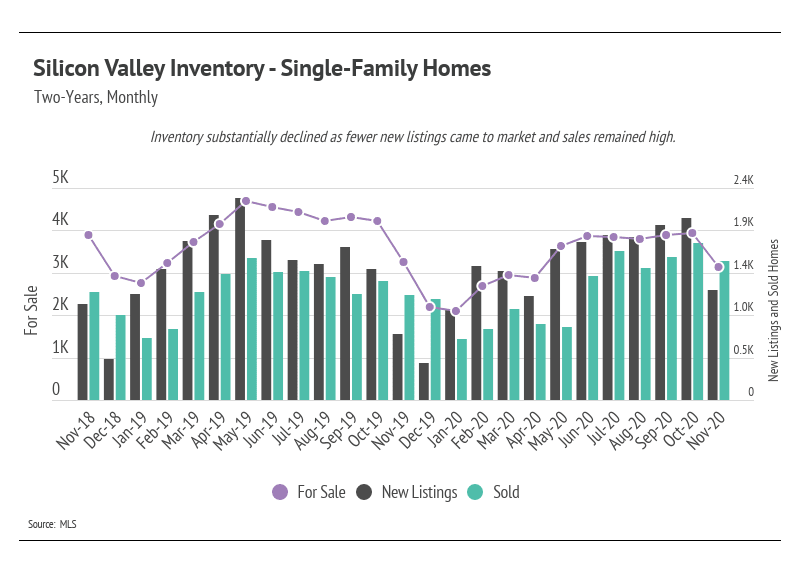
The number of condos on the market declined significantly in November. Fewer new listings came to market, and sales inched nearly as high as new supply.
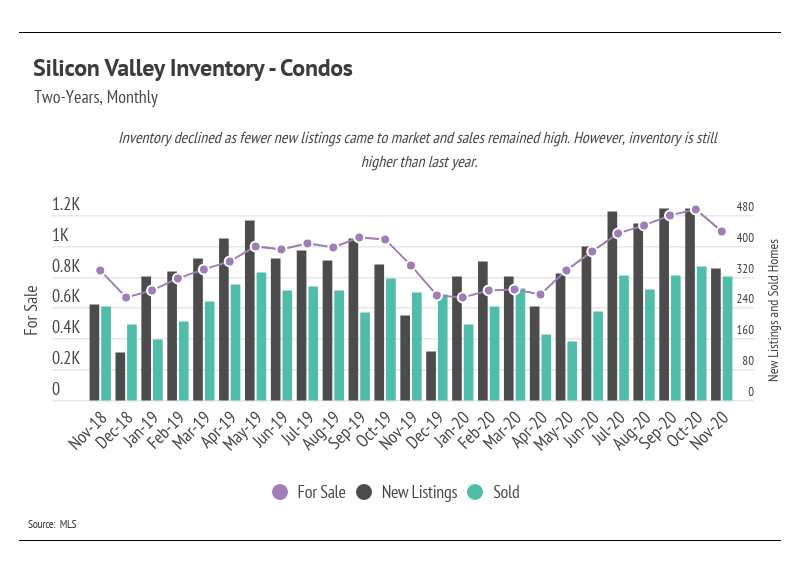
Days on Market (DOM) was higher in December, which is attributed to sold homes that have been on the market for longer than average. Normally, rising DOM indicates a slowing market, but that is not the case for Silicon Valley. Inventory built to a level that demand could not meet, so homes stayed on the market longer than usual. As we will see, the pace of sales affects Months of Supply Inventory (MSI) and has contributed to the low MSI over the past several months.
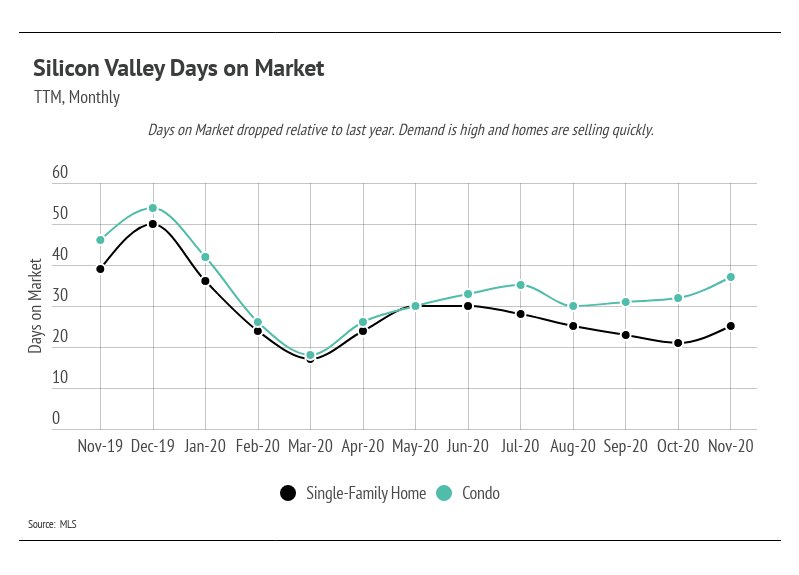
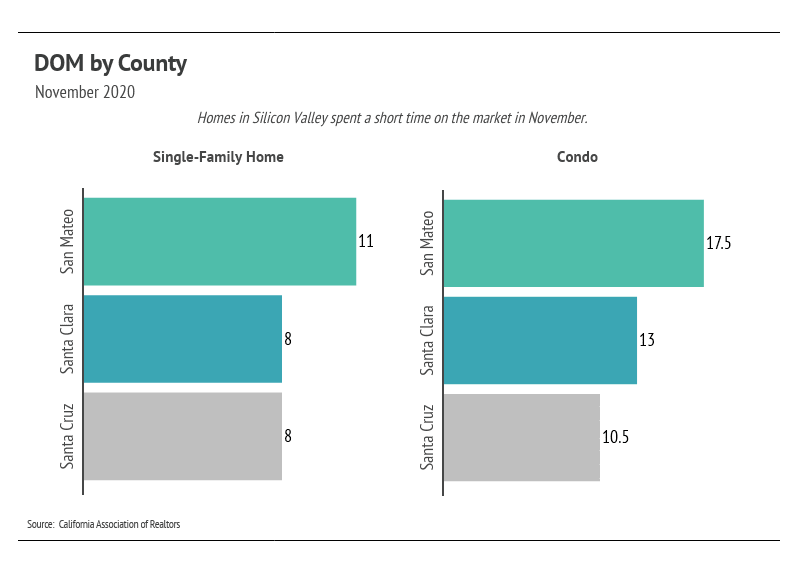
We can use MSI as a metric to judge whether the market favors buyers or sellers. The average MSI is three months in California (far lower than the national average of six months of supply), which indicates a balanced market. An MSI lower than three means that buyers dominate the market and there are relatively few sellers (i.e., it is a sellers’ market), while a higher MSI means there are more sellers than buyers (i.e., it is a buyers’ market). The MSI dropped below one for single-family homes, which firmly favors sellers. The MSI for condos also declined to 2.1, indicating a sellers’ market as well.
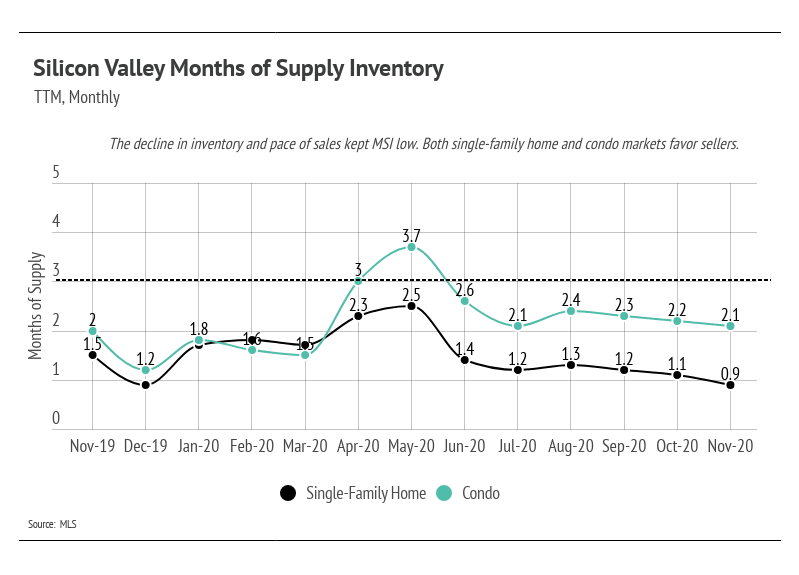
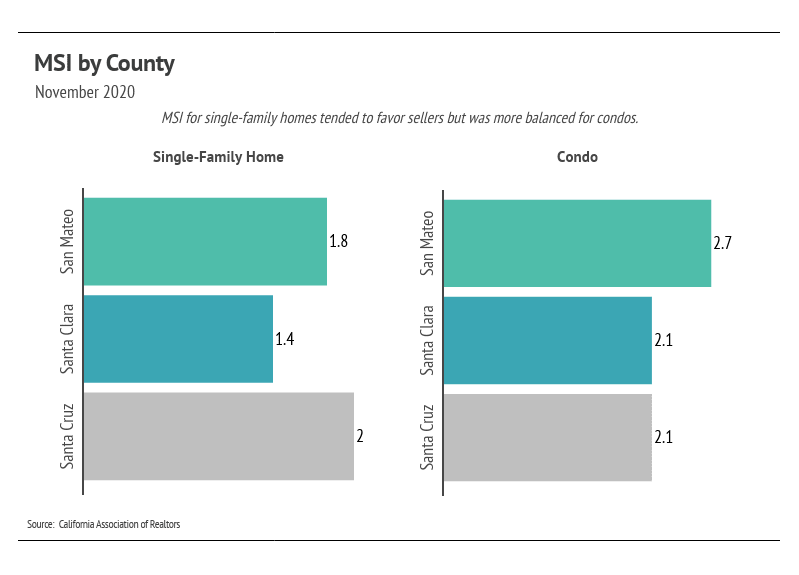
In summary, the high demand in Silicon Valley has sustained home prices. Inventory for single-family homes and condos will likely decline further into the new year, and fewer sellers will likely come to market, potentially lifting prices higher. Overall, the housing market has shown its resilience through the pandemic and remains one of the safest asset classes. The data show that housing has remained consistently strong through this period.
We anticipate new listings to slow through the holiday months. The autumn/winter season tends to see a slowdown in activity, although we did see a new trend toward the end of 2020 with higher-than-normal sales.
As always, we remain committed to helping our clients achieve their current and future real estate goals. Our team of experienced professionals are happy to discuss the information we’ve shared in this newsletter. We welcome you to contact us with any questions about the current market or to request an evaluation of your home or condo.
Stay up to date on the latest real estate trends.






You’ve got questions and we can’t wait to answer them.